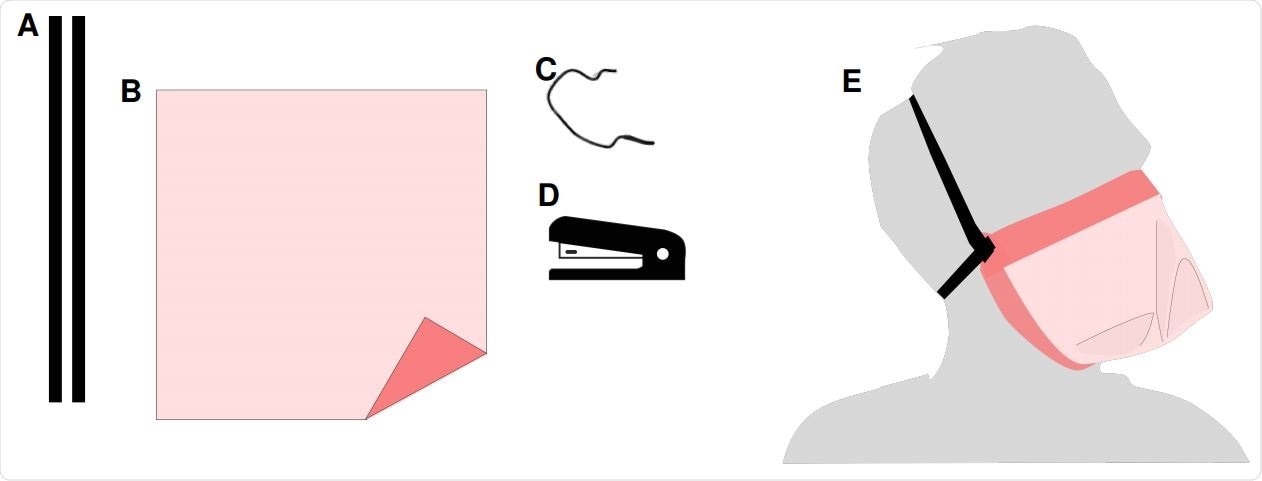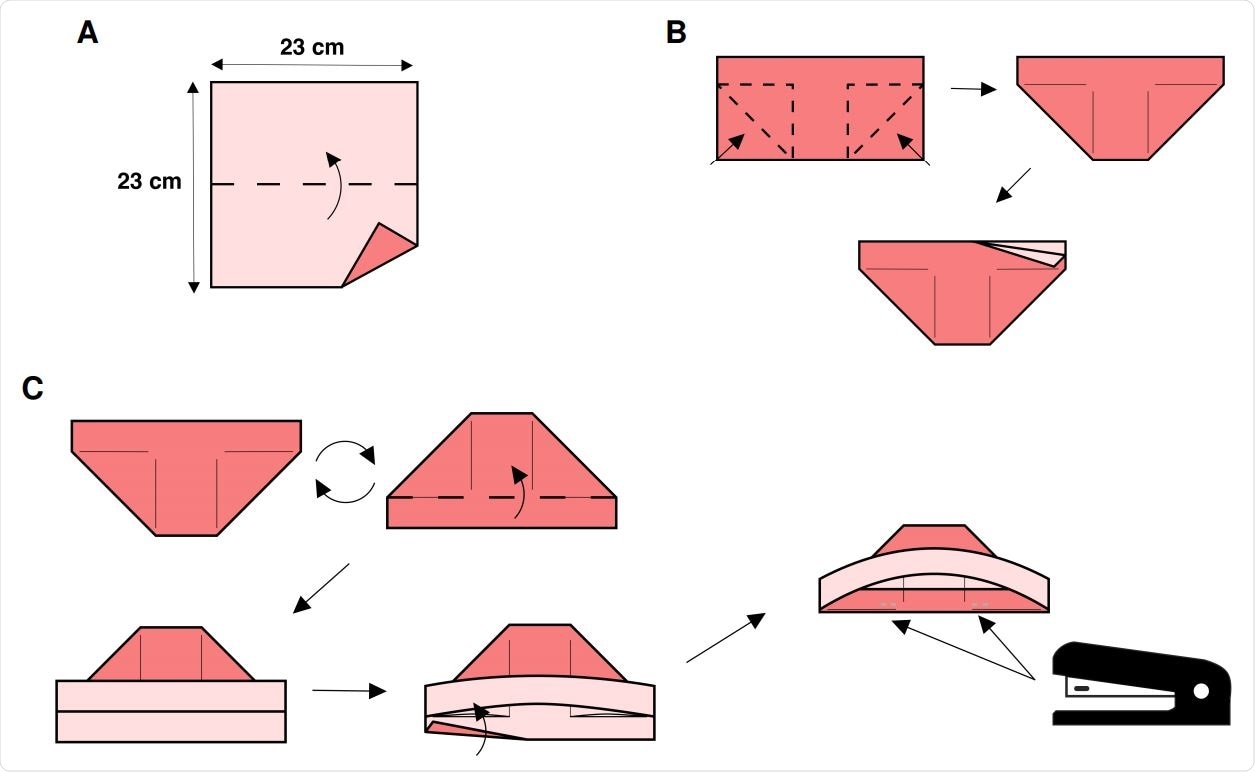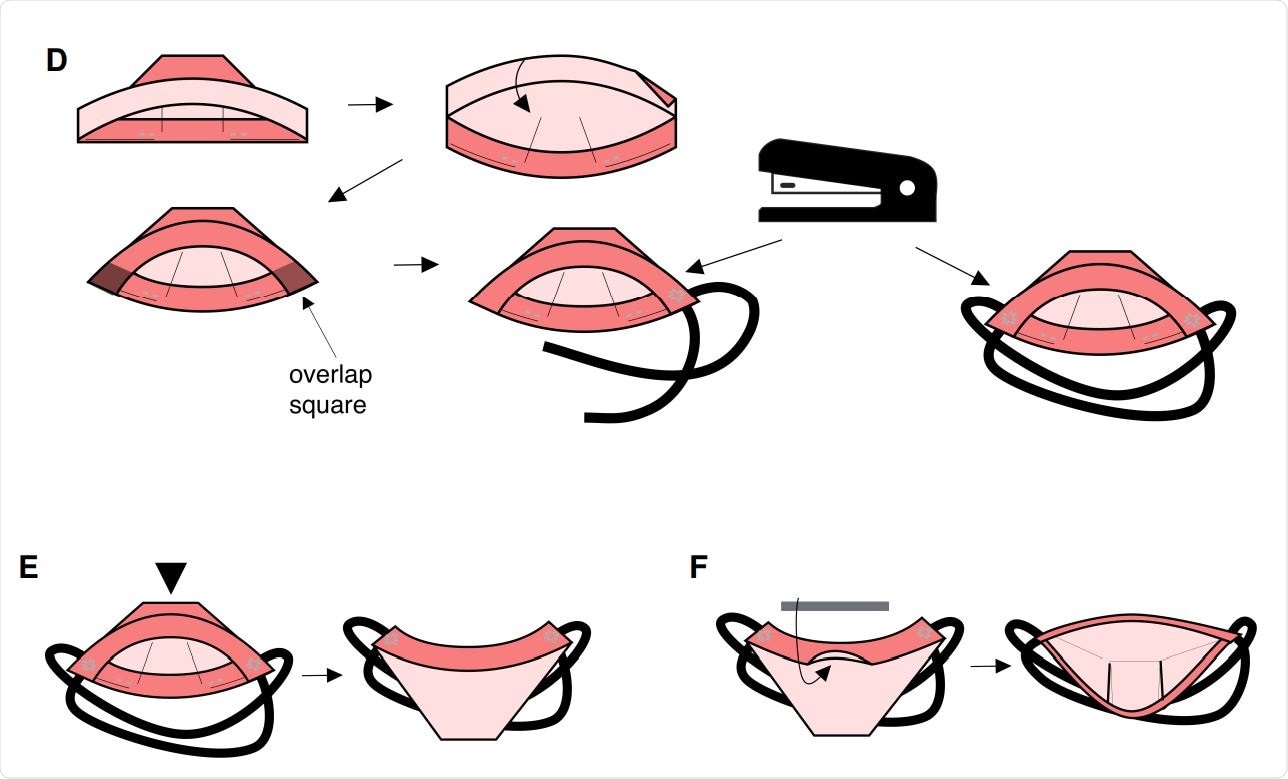Most respiratory diseases are transmitted via pathogens contained within droplets and aerosols, emitted during ordinary breathing, talking, sneezing, and coughing. A surgical mask creates a barrier to such pathogens to prevent new infections.
In the current COVID-19 pandemic, the lack of effective antivirals or vaccines has made it essential to use such non-pharmaceutical interventions to reduce respiratory spread, including social distancing and the use of face coverings by all individuals when in a public space. In some places, mask production and distribution have been severely tested, forcing those in the frontline to make their own.
Both the public and essential workers in poorer countries use improvised cloth masks even though their effectiveness is inadequately studied. Surgical masks decrease the odds of droplet spread from the wearer to others, and also partially prevent transmissions from sprayed or splashed body fluids. However, their filtration and the facial fit is insufficient to offer respiratory protection. Even so, surgical masks have been demonstrated to reduce infection odds in healthcare workers, though in small studies.

Sew-free origami mask raw materials and tools for fabrication (A-D), and illustration of a fabricated mask (E). The raw materials needed to fabricate a mask include: (A) two elastic straps; (B) square piece(s) of filter material(s), which can include multiple plies;(C) nose clip material (twist tie, paper clip, or other malleable material); and (D) a stapler and staples used to securely join the mask. (E) After fabrication the mask is worn over the nose and mouth and secured to the face with the elastic strap.

 *Important notice: medRxiv publishes preliminary scientific reports that are not peer-reviewed and, therefore, should not be regarded as conclusive, guide clinical practice/health-related behavior, or treated as established information.
*Important notice: medRxiv publishes preliminary scientific reports that are not peer-reviewed and, therefore, should not be regarded as conclusive, guide clinical practice/health-related behavior, or treated as established information.
Issues with Currently Available Masks
High-quality masks like the well-known N95 respirators protect the user by fitting the facial contours well, keeping out droplets and aerosol particles. They are better at preventing air leakage during a cough or sneeze compared to surgical masks. However, some authorities continue to recommend that these be used only by healthcare workers and those in close contact with known or suspected patients.
The World Health Organization (WHO) recommends that all medical personnel use medical-grade masks, and N95 respirators or their equivalent be used when performing any procedure likely to generate an aerosol in suspected patients.

Steps A-C of the origami fabrication process. (A) Fold along horizontal axis. (B) Inside-reverse fold each bottom corner leaving an approximate 2.5 cm margin at the top. After the operation you should have a boat shape with two tabs. (C) Rotate piece 180 degrees so you have a hat shape. Fold the top tab up. Tuck the bottom tab into the hat shape over the reverse folded corners from Step B. Next, staple the folded bottom tab to the reverse folded corners.
On the other hand, the growing evidence that asymptomatic and presymptomatic transmission make up a large percentage of all respiratory spread, it is highly desirable that all individuals wear masks designed to offer filtration and fit characteristics comparable to that of respirators.
These are dependent mainly on the filtration material used and the design. Filter fabrics have ranged from cotton, silk, chiffon, and surgical drape fabrics. However, the fit is another primary consideration, since even the best material can fail to shield if the mask leaves gaps between itself and the face. In fact, studies show that filtration efficiency can be less by up to 60% in such a situation.
Secondly, materials that are excellent filters also make it harder to breathe, and the increased resistance to the flow of air through the mask makes it more likely that air will leak through the sides.

Steps D-F of the origami fabrication process. (D) Fold the top tab into the hat shape making sure to fold over the lower tab so that the edges are aligned and the tabs are perpendicular to each other. They should overlap in a square. Starting with one corner, align one elastic strap with one of the folded tabs and staple through the mask layers and strap. Repeat for the second elastic strap making sure to align it with the other folded tab. Use two more staples to secure the straps. Repeat on the other corner, making sure to align each strap with the correct tab. (E) Turn the shape inside out. Carefully push the top of the hat shape through the folded tabs. (F) Install the nose clip. If using a coffee bag tin, remove the adhesive back, open the top tab and place the coffee bag tin sticky side down inside the crease. If using wire, you can secure the wire with a staple.
Objectives for Improvised Mask Construction
The current study aims to present a method of making an improvised mask suitable for protection against respiratory viruses and can be made without any particular expertise or supplies.
The objectives were to produce an affordable mask, with minimal leakage around the edges, offering efficient filtration and easy breathing, thus providing much more comfort and promoting the use of masks by more people. It does not involve sewing, and little manual labor is required, thus making it possible to produce large numbers in a short period of time.
The WHO recommends that the French Standardization Association (AFNOR Group) standard for non-medical masks be used for the public. This standard (S76-00137) takes into account the need for efficient filtration to at least 70%, but also breathability, with the maximum inhalation and exhalation resistance being 2.4 and 3 mbar, respectively.
AFNOR recommends a 3-ply mask design. The innermost layer is absorbent, the middle is non-woven with high filtration efficiency, and the outermost is weatherproof. The shape is also important, with AFNOR recommending the duckbill shape that keeps leakage low.
Design and Characteristics of a Good Mask
The current study is based on these recommendations. It proposes a mask design that makes it safe for both frontline workers who have numerous contacts with the public but may not have access to high-quality masks and the general public. The former may include staff in nursing homes, education, childcare, hospitality industry, and public transport, as well as emergency responders and healthcare workers.
The researchers looked at the filtration efficiencies of 18 kinds of materials, some of which are multilayered hybrid materials and the combined effect of filtration efficiency and fit on the total protection offered by the mask. The highest filtration efficiency was found to be at nearly 100% for a 2-layer furnace filter, and only 5% for NWPP, the material used in shopping bags.
However, materials that have excellent filter characteristics also have higher pressure drops, which promotes higher leakage. The way out is to use those materials that are designed for filtration, such as furnace filters and Filti brand filter media.
The researchers sum up their findings, “Masks with higher upper bound filtration efficiencies often exhibited larger total efficiency ranges, implying that high-efficiency media typically possess high-pressure drops, which ultimately results in mask leakage.”
Finding the Right Fit
The researchers tested 15 different mask designs, including those based on single- and double-ply and hybrid materials for fit testing. They also tested five mask designs, 1F, iH, H1, H2, H3, which meet AFNOR SPEC S76-001 standards for both filtration and pressure drop.
Mask leakage was also determined on fit testing, which better simulates real-life situations rather than earlier studies where the media were tested rather than masks, and leakage was simulated by making tiny holes in the sample tube downstream of the filter medium.
They found that surgical and KN95 reference masks showed excellent ideal filtrations efficiency of 95% and 93% filtration efficiency at 300 nm, respectively. Under nominal or unsealed conditions, however, their performance dropped drastically to 30%.
For the latter type of mask, the ear loops are to blame, they suggest, since this reduces the fit. Using head straps will prevent leakage much better.
Their tests showed that the 2-ply Filti masks (2F) performed very well, with a high filtration efficiency and a high-pressure drop but low leakage.
Thus, “our results reveal that filtration performance is dominated by mask fit and that reducing the pressure drop of the filter material attenuates leakage.”
They also tested the fit on a human being with the quantitative fit test OSHA Specification 1910 as the reference. The results suggest that under actual-use conditions, the origami mask is just as efficient at filtration than the ideal conditions under which it is tested on the mannequin. The widest gap in efficiencies derived from the OSHA fit test and the mannequin-based test were seen with the KN95 with ear loops and the surgical mask, and this was due to leakage.
Implications
The researchers conclude that this origami technique can be used to construct a range of masks with optimum filtration-pressure drop balance for best performance. By using the right filter media, they can offer better protection than the commercially available respirators, with high filtration efficiency, a lower pressure drop, and minimal leakage.
The benefits of this origami fabrication procedure are its flexibility, allowing adaptation to multiple facial sizes, optimal choice of filter media for filtration efficiency vs. pressure drop, and allows for comfortable wearing with easy breathing. This could help encourage more people to accept universal mask usage.

 *Important notice: medRxiv publishes preliminary scientific reports that are not peer-reviewed and, therefore, should not be regarded as conclusive, guide clinical practice/health-related behavior, or treated as established information.
*Important notice: medRxiv publishes preliminary scientific reports that are not peer-reviewed and, therefore, should not be regarded as conclusive, guide clinical practice/health-related behavior, or treated as established information.